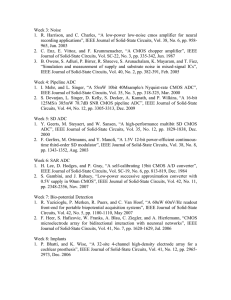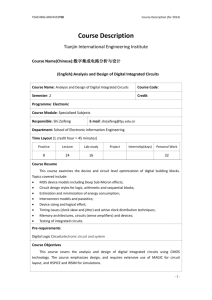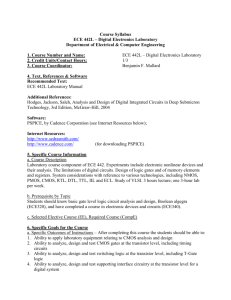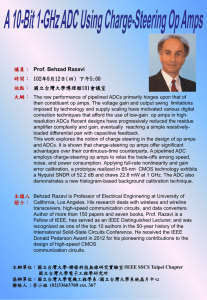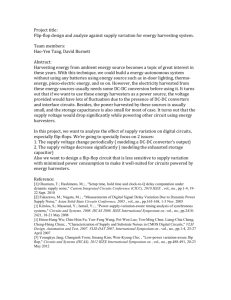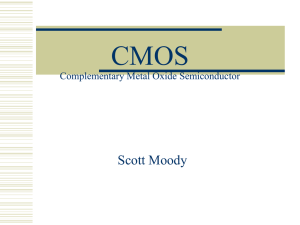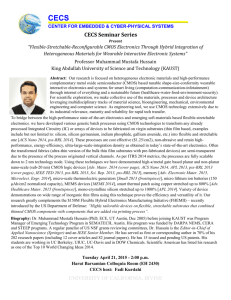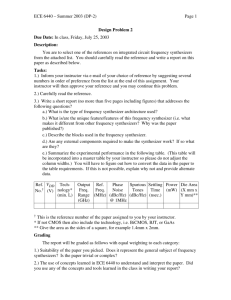Direct Conversion
advertisement
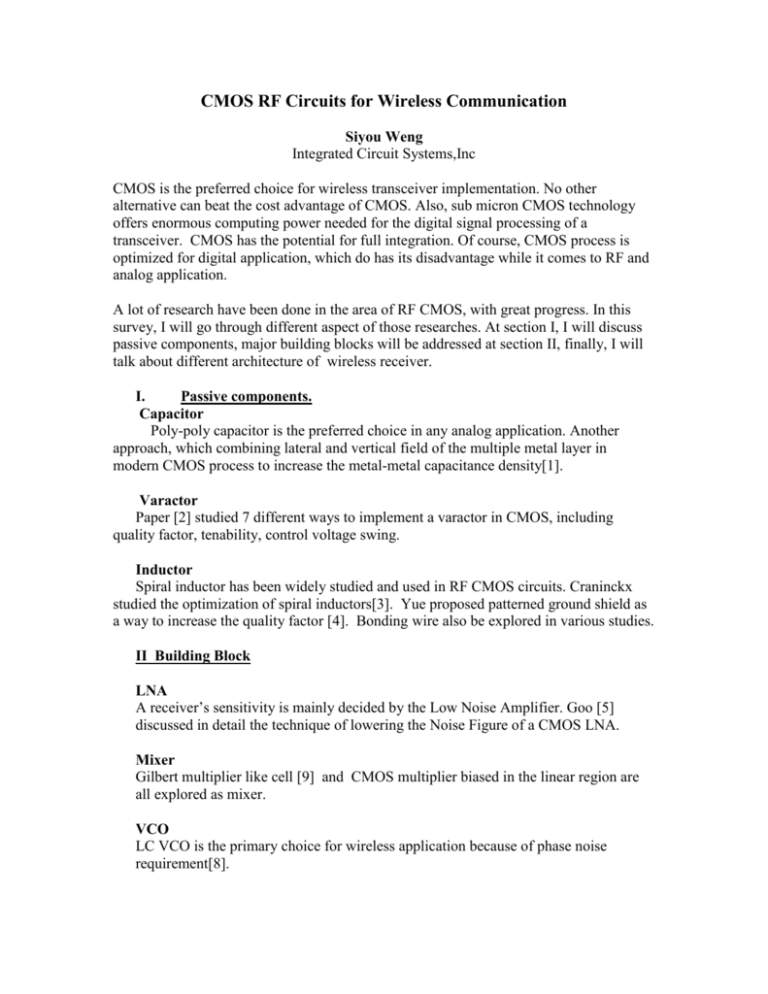
CMOS RF Circuits for Wireless Communication Siyou Weng Integrated Circuit Systems,Inc CMOS is the preferred choice for wireless transceiver implementation. No other alternative can beat the cost advantage of CMOS. Also, sub micron CMOS technology offers enormous computing power needed for the digital signal processing of a transceiver. CMOS has the potential for full integration. Of course, CMOS process is optimized for digital application, which do has its disadvantage while it comes to RF and analog application. A lot of research have been done in the area of RF CMOS, with great progress. In this survey, I will go through different aspect of those researches. At section I, I will discuss passive components, major building blocks will be addressed at section II, finally, I will talk about different architecture of wireless receiver. I. Passive components. Capacitor Poly-poly capacitor is the preferred choice in any analog application. Another approach, which combining lateral and vertical field of the multiple metal layer in modern CMOS process to increase the metal-metal capacitance density[1]. Varactor Paper [2] studied 7 different ways to implement a varactor in CMOS, including quality factor, tenability, control voltage swing. Inductor Spiral inductor has been widely studied and used in RF CMOS circuits. Craninckx studied the optimization of spiral inductors[3]. Yue proposed patterned ground shield as a way to increase the quality factor [4]. Bonding wire also be explored in various studies. II Building Block LNA A receiver’s sensitivity is mainly decided by the Low Noise Amplifier. Goo [5] discussed in detail the technique of lowering the Noise Figure of a CMOS LNA. Mixer Gilbert multiplier like cell [9] and CMOS multiplier biased in the linear region are all explored as mixer. VCO LC VCO is the primary choice for wireless application because of phase noise requirement[8]. PA Depends on the modulation scheme used by system, linearity requirements are different. Nonlinear PA have higher PAE, using distributed active-transformer can achieve higher frequency[10]. III Transceiver Architecture Direct Conversion Direct conversion architecture is the most straight forward one, but suffers mainly from dc-offset problem due to VCO leakage. Lee[9] using the fact that a sine wave with frequency Fc can be represented as product of (N/2) sine waves of frequrncy (2*Fc/N) with certain phase relationship, using local oscillator only one-third of carrier frequency but using six phase, then drastically reduce the dc-offset to a negligible level. Low IF [11] use low IF approach, the image rejection is done by quadrature down-mixing, then uses A/D converter directly digitize the 100K IF signal for baseband process. This approach eliminate the dc offset problem of direct conversion also preserve the simplicity. Double Conversion Behbahani, et al [12] use double IF structure. First, this avoid the dc offset and 1/f noise which can significantly degrade SNR of the receiver, especially for 64-QAM signals, second, this ease the image rejection requirement for the whole data path, for perfect image-rejection depends on perfect matching, if using a direct conversion, 40db image rejection ration means better than 1% matching throughout the conversion path, which is unpractical in CMOS. Reference [1] R. Aparico, et al, “Capacity Limits And Matching Properties of Integrated Capacitors”, IEEE J. Solid-State Circuits , pp384-393, Vol 37, March 2002 [2] A. Porret et al, “Design of High-Q Varactors for Low-Power Wireless Applications Using a Standard CMOS Process”, IEEE J. Solid-State Circuits, pp 337345, Vol 35, March 2000 [3] J. Craninckx, et al, “A 1.8-GHz Low-Phase-Noise CMOS VCO Using Optimized Hollow Spiral Inductors”, IEEE J. Solid-State Circuits, pp736-744, vol 32, May 1997 [4] C.P. Yue, et al, “On-chip Spiral inductors with patterned ground shields for Sibased RF ICs”, IEEE J. Solid-State Circuits, vol33, pp 734-752, May 1998 [5] J. Goo, et al, “A Noise Optimization Technique for Integarted Low_Noise Amplifiers”, IEEE J. Solid-State Circuits, pp994-1002, vol 37, August, 2002 [6] J.C.Rudell, et al, “A 1.9 Ghz Wide-Band IF Double Conversion CMOS Receiver for Cordless Telephone Applications”, IEEE J. Solid-State Circuits, pp 2071-2088, Vol 32, Dec 1997 [7] A. Rofougaran,et al, “A Single-Chip 900Mhz Spread-Spectrum Wireless Transceiver in 1-um CMOS- Part II: Receiver Design”, IEEE J. Solid-State Circuits, pp.535-547, Vol 33, April 1998 [8] C. Guo, et al, “A Fully Integrated 900-Mhz CMOS Wireless Receiver With OnChip RF and IF Filters and 79-dB Image Rejection”, IEEE J. Solid-State Circuits, pp1084-1089, Vol 37, August 2002 [9] K. Lee et al, “A Single-Chip 2.4-GHz Direct Conversion Receiver for Wireless Local Loop using Multiphase Deduced Frequency Conversion Technique”, IEEE J. Solid-State Circuits, pp.800-809,Vol 36, May, 2001 [10] I. Aoki, et al, “Fully Integrated CMOS Power Amplifier Dedign Using the Distributed Active-Transformer Architecture”, IEEE J. Solid-State Circuits, pp 371383, Vol 37, March 2002 [11] M. Steyaert, et al, “A 2-V CMOS Cellular Transceiver Front-End”, IEEE J. Solid-State Circuits, pp 1895-1907, vol 35, Dec, 2000 [12] F. Behbahani, et al, “A 2.4-GHz Low-IF Receiver for Wideband WLAN in 0.6um CMOS-Architecture and Front-End”, IEEE J. Solid-State Circuits, pp19081916, Vol 35, Dec, 2000

